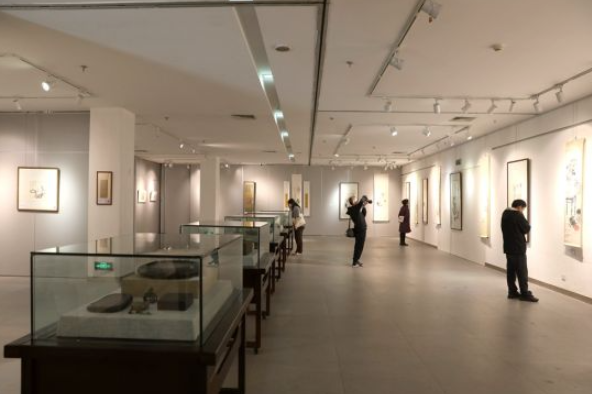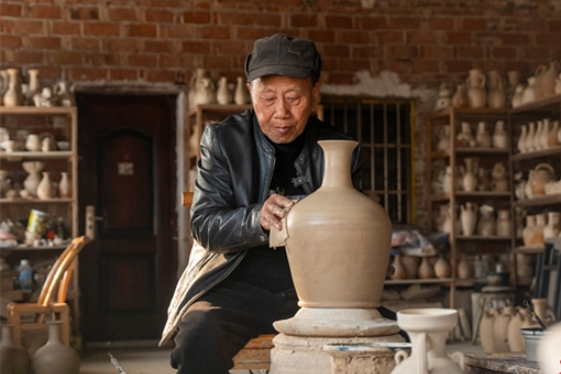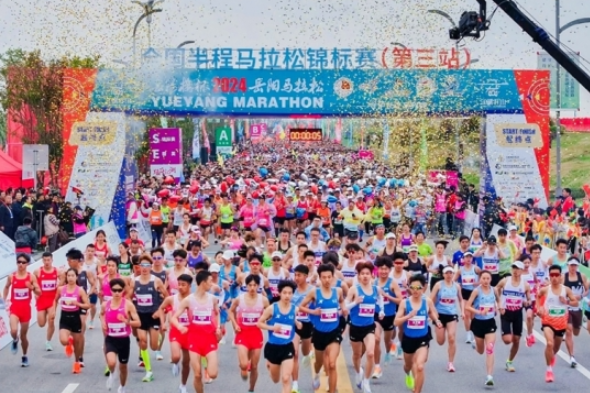The legacy of the late chairman lives on in restaurants founded by his favorite chef, Ye Jun discovers. History is in the food at Cheng Fu Yan, literally translated as "Cheng's official banquet". Few people would fail to notice the importance of its location, as they arrive at No 38 Nanchangjie. Zhongnanhai, the central government complex, is just across the street. It is a small courtyard house, with just two bungalows and a two-floor building. There are only seats for a maximum of 24 guests. The staff members explain it is not easy to have a two-floor building opposite Zhongnanhai, because of strict security in the area. Opened in 2009, the restaurant is the final achievement of Cheng Ruming (1926-2012), Chairman Mao Zedong's executive chef for 20 years. Cheng also headed the kitchen for state leaders after Mao Zedong, including Deng Xiaoping and Jiang Zeming. But the menu highlights the Mao era, and quite a few dishes mark important historical moments in China. Brown-braised pork is a signature dish of Cheng Fu Yan restaurant. It's cooked in a way late leader Chairman Mao Zedong was fond of. Photos by Ye Jun / China Daily A private room in Cheng Fu Yan is decorated in the style of Mao Zedong's study. "Marshal's prawn" is a dish Cheng prepared in 1961, when World War II British field marshal Bernard Law Montgomery met Mao in Wuhan, Hubeiprovince. Cheng wrapped Bohai sea prawn with cheese and bread crumbs for deep-frying, turning out a dish that is crispy at the skin, tender inside and full of milky aroma. Another dish he prepared is famous in China because of Mao's poem about the ingredient: Wuchang's fish. Cheng braised Wuchang bream with salt, yellow rice wine and basil. Mao's poetic praise for the fish was later compiled into the nation's elementary school textbook. Other dishes also help people to have a better understanding of Mao. Brown-braised pork is a delicacy popular in Hunan province, hometown of Mao. But unlike ordinary brown-braised pork, the version Mao ate was cooked without soy sauce. Shortly after Cheng came to Zhongnanhai as Mao's chef in 1956, he prepared brown-braised pork, which was returned to the kitchen untouched, twice. Terrified this could mean the end of his service, Cheng sought a chance to ask Mao the reason directly. It turned out that in Mao's boyhood, his family ran a soy-sauce workshop, and he noticed "small lives" in the fermentation jars. So he stopped eating dishes with soy sauce. After that, Cheng never used soy sauce in preparing the famous pork. Instead, he fried sugar to brown to give the pork its color. Cheng Fu Yan's second branch near Yuquan Mountain in western Beijingimitated the decoration of Zhongnanhai in Mao's time. The sofas are a bit harder than today's sofas, but very comfortable to sit on. The walls are decorated with Mao's portrait and pictures of him meeting Montgomery. Several private rooms at the Yuquan Mountain branch are decorated into the style of Mao's guestroom, study and tearoom. The Yuquan Mountain branch is much bigger than the original, with an informative museum at the entrance. Born in 1926, Cheng had training in both Chinese and Western cooking, as he worked in restaurants at Tianjin's foreign settlement in the 1940s, where he learned to prepare English, French and Russian cuisines. Cheng became a chef in Beijing's railway bureau, and he got his first chance to serve Mao on a special train in 1954. Two years after that, he was transferred to Zhongnanhai to serve Mao and other state leaders. Cheng summed up some of Mao's requests: mainly vegetarian, occasionally meat, fresh, light and healthy. The foods were rich in protein, minerals, vitamins, vegetable fiber and juice. In the museum, a wax statue of Cheng shows a smiling, earnest, kind old man. There are some photos that would be impossible to see elsewhere. There are Cheng's photos with Mao, and Mao's daughter and nephew, and even Mao's wife Jiang Qing. One interesting surprise from his time working in Tianjin: Before he came to Beijing to cook for Mao, he got a chance to serve a mysterious important guest, whom he later learned was Chiang Kai-shek. The museum's display board says Cheng kept that a secret for 60 years. Cheng Fu Yan has its third branch at Dongsi. All three restaurants are laid out courtyard style, and decorated with an eye to Mao's time and taste. Cui Shibing, the restaurant's general manager, says the eatery has a small group of guests who particularly like its delicate style. Most people come for a business meal, if not to impress their guests. The restaurant decor, as well as the stories behind the food, take diners back to that historic time. It is a very quiet place to have a good conversation. 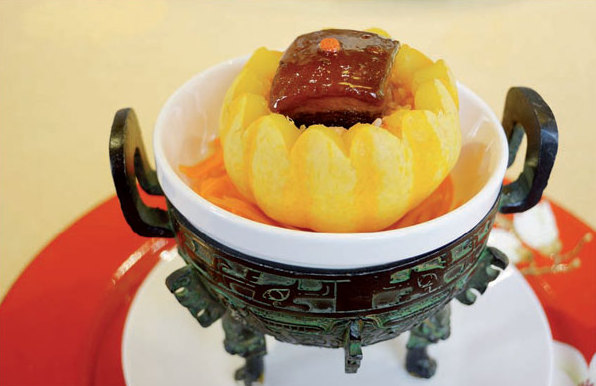
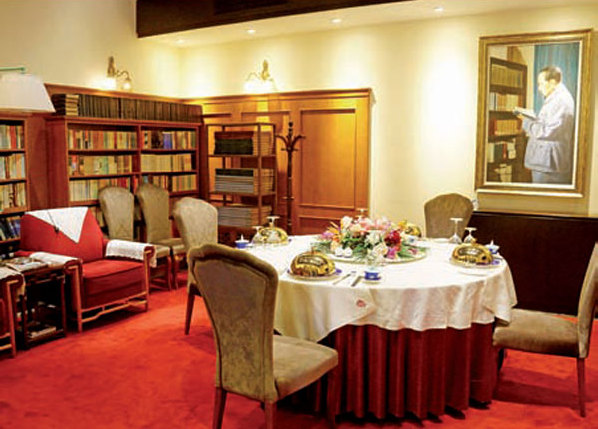
At Mao's Table
Editor:李莎宁
Source:中国日报网
Updated:2013-12-10 15:20:50
Source:中国日报网
Updated:2013-12-10 15:20:50
Special
Contact
Welcome to English Channel! Any suggestion, welcome.Tel:0731-82965627
lisl@rednet.cn
zhouqian@rednet.cn



